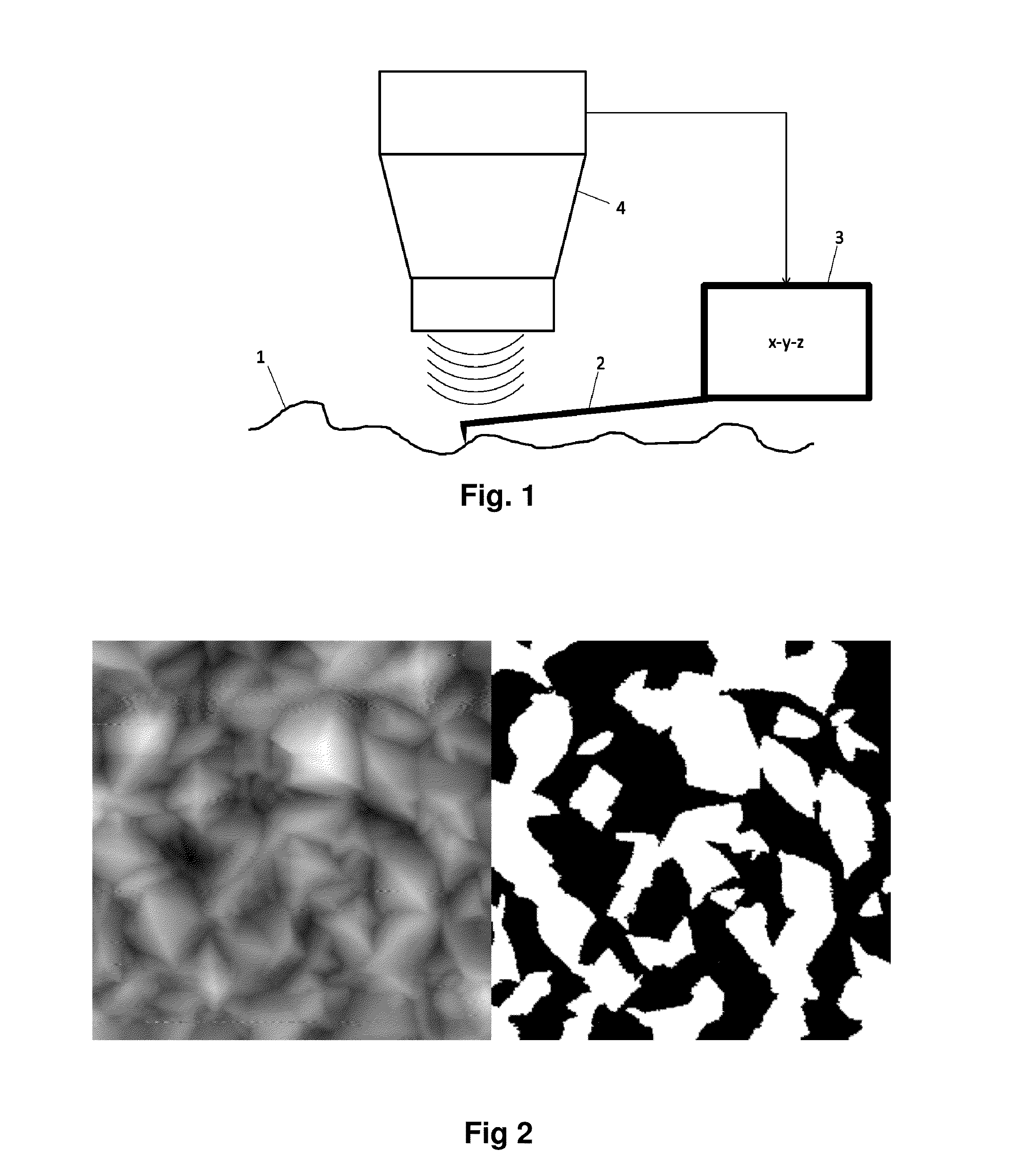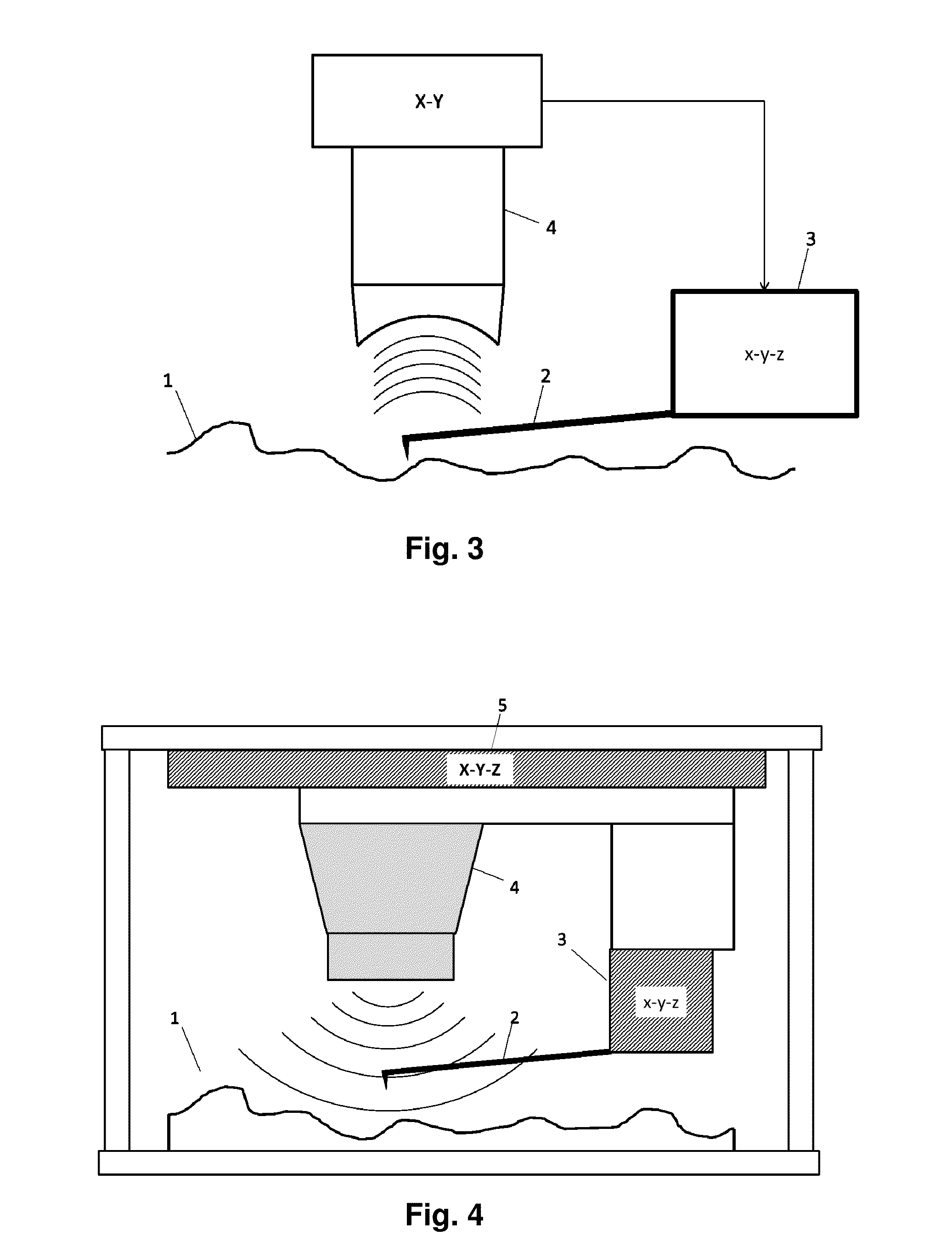Method and apparatus for automated scanning probe microscopy
- Summary
- Abstract
- Description
- Claims
- Application Information
AI Technical Summary
Benefits of technology
Problems solved by technology
Method used
Image
Examples
second embodiment
[0041]FIG. 3 shows a second embodiment wherein the PED 14 is a photo-acoustic system whose principle is described by Zhang et al. in Nature Biotechnology 24, No. 7, 848-851 (July 2006): “Functional photoacoustic microscopy for high-resolution and noninvasive in vivo imaging”. In this system, a laser-emitted light pulse is focused onto an object area of a sample and generates photo-acoustic ultrasonic waves. The magnitude of these acoustic waves indicates the distribution of optical energy in the sample. The acoustic waves emitted by the sample are received by an ultrasonic transducer which is scanned in x-y direction across the surface and whose output is processed electronically to generate a digital image of the object area, i.e. an overall or integral map.
[0042]The digital data thus generated by the PED 4 are processed in the same manner as described above to define the areas of interest of the sample. These locations can be single points or coherent areas. The SPM probe is then ...
third embodiment
[0043]FIGS. 4 and 5 show a third embodiment where the overall map is obtained by an integrated PED-SPM, i.e. a combined mechanical and / or electronical device including the coarse approach system or PED 4 with its drive system 5 and the SPM 3. The PED here being used as part of the integral PED-SPM uses an optical mapping as described by, e.g., M. G. L. Gustafsson et al. in Biophys. Journal, 94, 4957-4970 (June 2008): “Three-dimensional resolution doubling in wide-field fluorescence microscopy by structured illumination”.
[0044]The method performed by the PED 4 is a three-dimensional scanning method using structured illumination of a sample. It has the advantage that large samples can be investigated rather quickly. Even samples that are larger than the optical field of view of the PED can be quickly scanned by relative movement between the sample and the PED. The details of this first step according to the invention are as follows.
[0045]The measurement is initiated by placing the sam...
PUM
 Login to View More
Login to View More Abstract
Description
Claims
Application Information
 Login to View More
Login to View More - R&D
- Intellectual Property
- Life Sciences
- Materials
- Tech Scout
- Unparalleled Data Quality
- Higher Quality Content
- 60% Fewer Hallucinations
Browse by: Latest US Patents, China's latest patents, Technical Efficacy Thesaurus, Application Domain, Technology Topic, Popular Technical Reports.
© 2025 PatSnap. All rights reserved.Legal|Privacy policy|Modern Slavery Act Transparency Statement|Sitemap|About US| Contact US: help@patsnap.com



